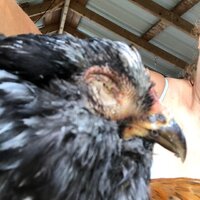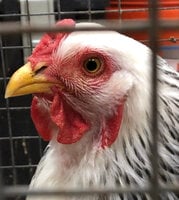Our flock contracted a respiratory illness. They all got sick, to varying degrees ranging from yellow snot flying everywhere and barely able to breath with TONS of rattling in the chest, to just a few sneezes and some lethargy. I suspect the two who showed the mildest symptoms had perhaps been vaccinated by the breeder. I’ve researched a LOT about the possible type of infection, but no veterinary tests were run. We treated them ourselves with antibiotics to guard against secondary infections and they all recovered, thankfully no one died. However, I have questions I can't find the answers to. This site said the same thing all the others did, it’s the most recent (thanks for the link BYC!) so I’m citing it here:
https://www.farmhealthonline.com/disease-management/poultry-diseases/infectious-bronchitis/
Info from the website is in BOLD, my questions are after that. Any answers you may have based on experience is greatly appreciated!!
Recovered birds are immune, but are carriers of the disease. – What exactly does this mean? If in the future I acquire more chickens and house them with my existing flock, does this mean the new chickens will become infected and get sick?
In adult birds, feed consumption and egg production tend to decrease sharply. The disease may damage the reproductive tract and cause a reduction in egg production, with misshapen, ridged and thin soft eggs of poor internal quality. – It’s been 5 weeks since the first sign of illness. Any idea when we will start seeing eggs? Their ages range from 16 months (previously laying for 8 months or so) to 5 months (the baby), seven hens and one accidental rooster. Several of the hens are 6 to 7 months old now and hadn’t started laying yet when the infection hit.
https://www.farmhealthonline.com/disease-management/poultry-diseases/infectious-bronchitis/
Info from the website is in BOLD, my questions are after that. Any answers you may have based on experience is greatly appreciated!!
Recovered birds are immune, but are carriers of the disease. – What exactly does this mean? If in the future I acquire more chickens and house them with my existing flock, does this mean the new chickens will become infected and get sick?
In adult birds, feed consumption and egg production tend to decrease sharply. The disease may damage the reproductive tract and cause a reduction in egg production, with misshapen, ridged and thin soft eggs of poor internal quality. – It’s been 5 weeks since the first sign of illness. Any idea when we will start seeing eggs? Their ages range from 16 months (previously laying for 8 months or so) to 5 months (the baby), seven hens and one accidental rooster. Several of the hens are 6 to 7 months old now and hadn’t started laying yet when the infection hit.






 That IS a lot of needle sticks! I only stuck each bird 2 or 3 times.
That IS a lot of needle sticks! I only stuck each bird 2 or 3 times.